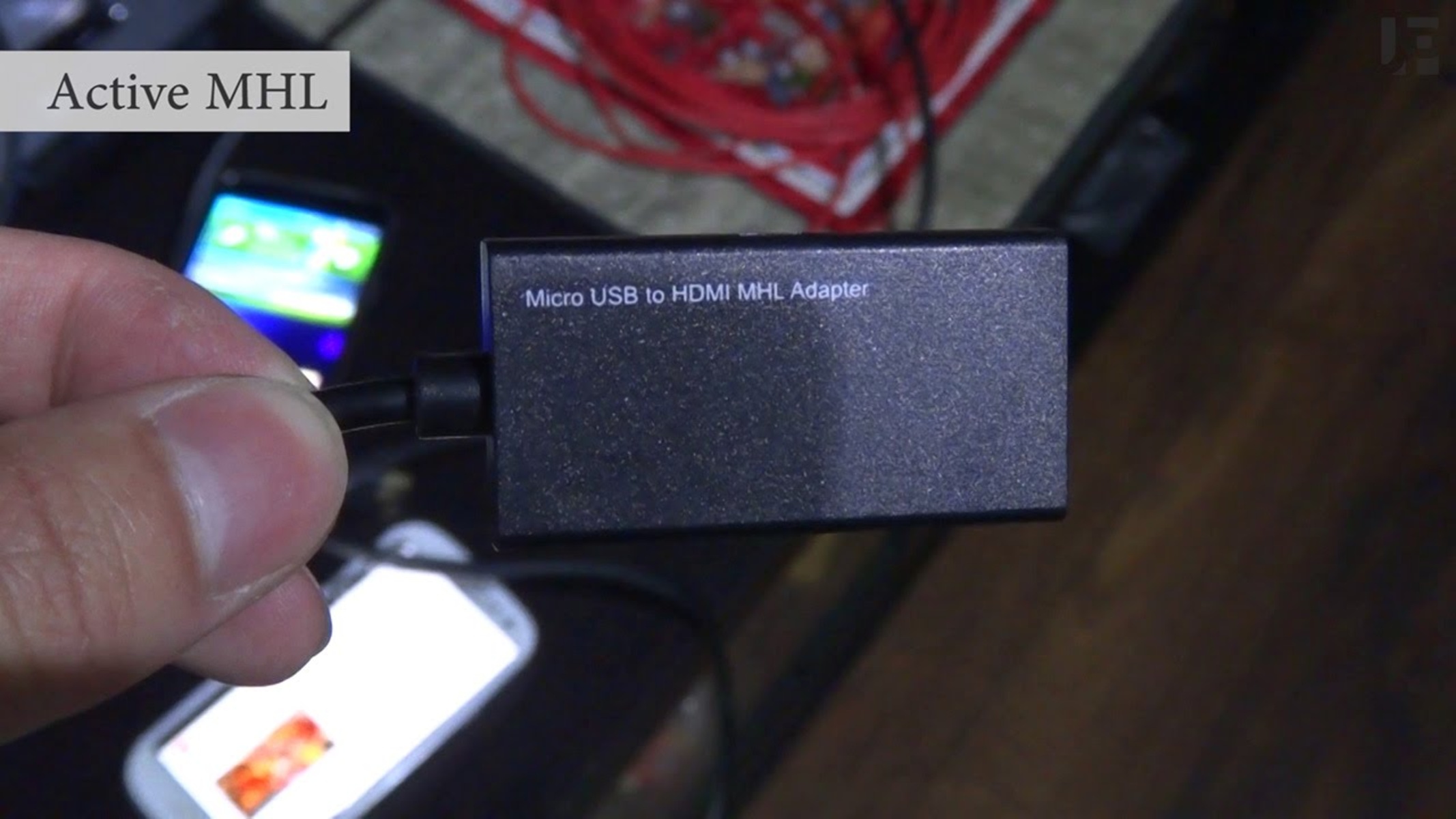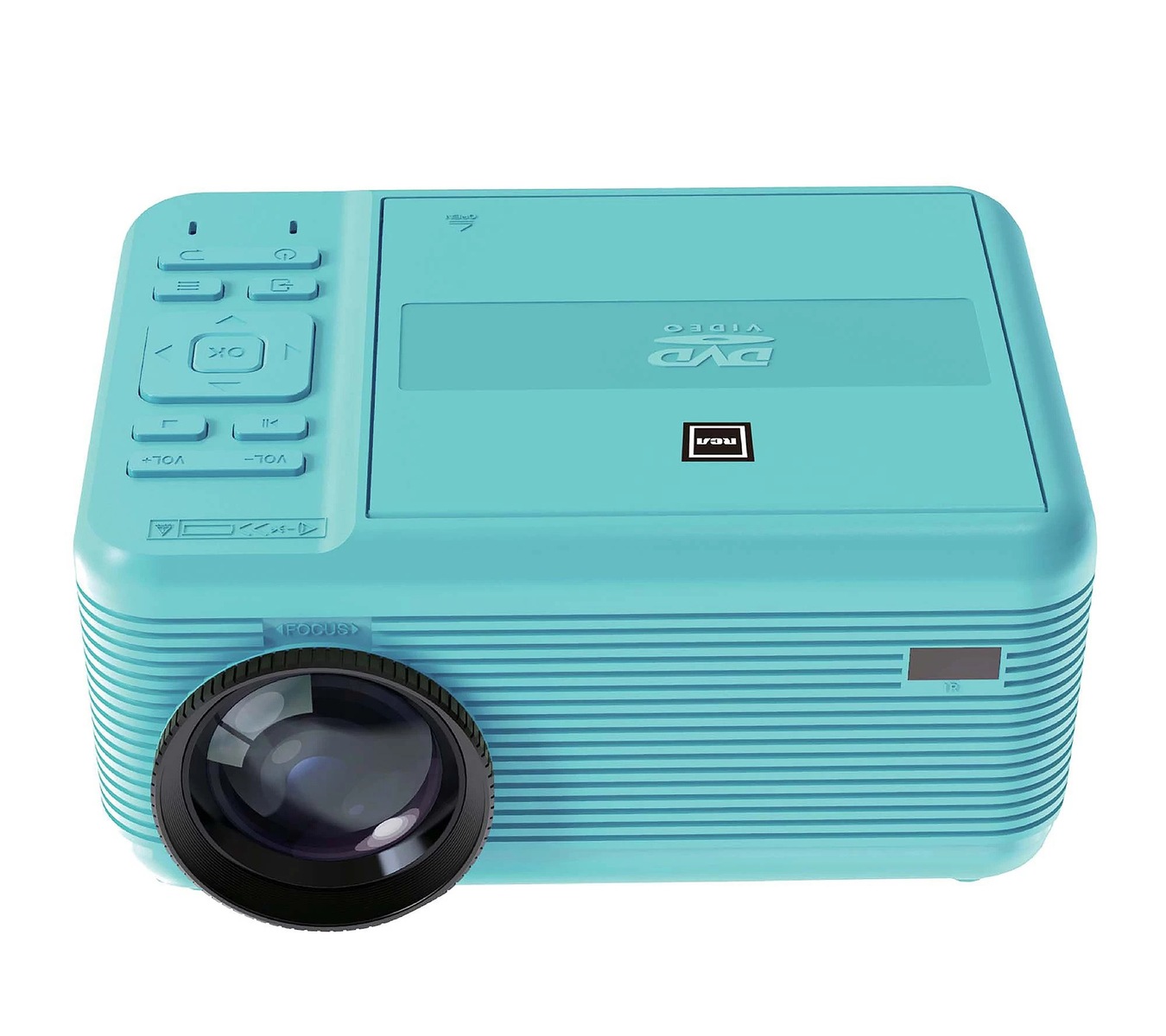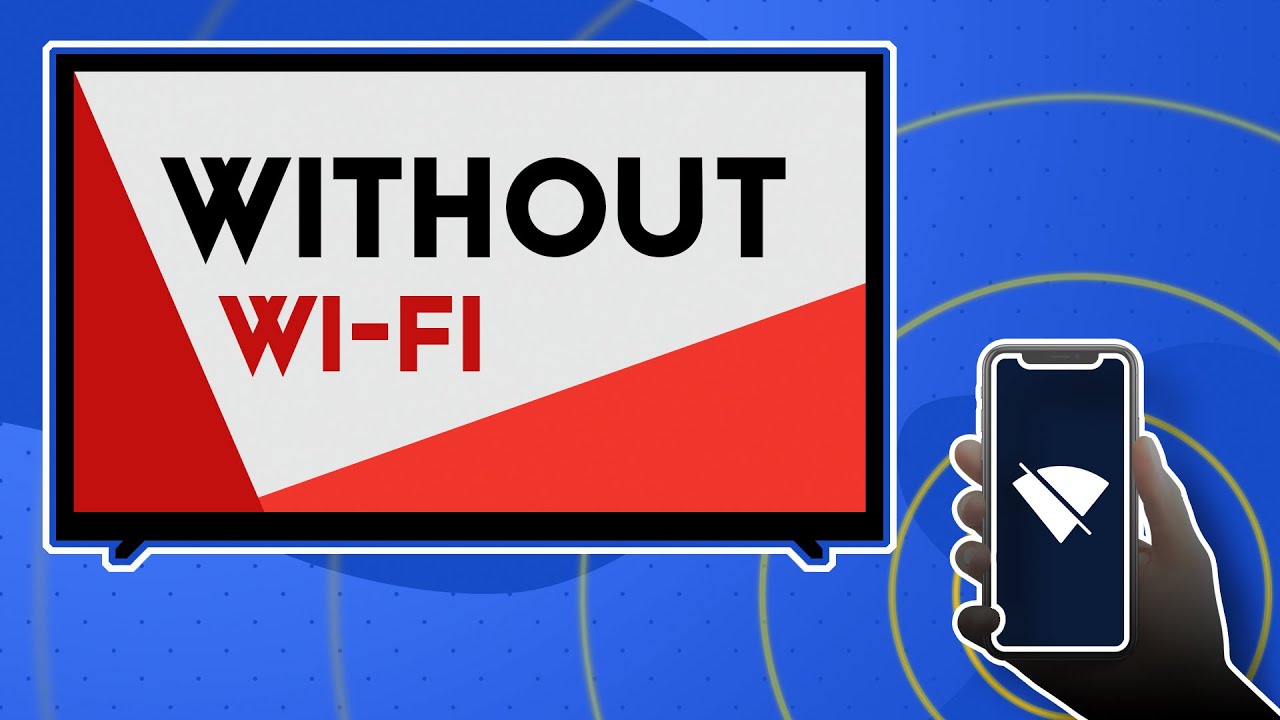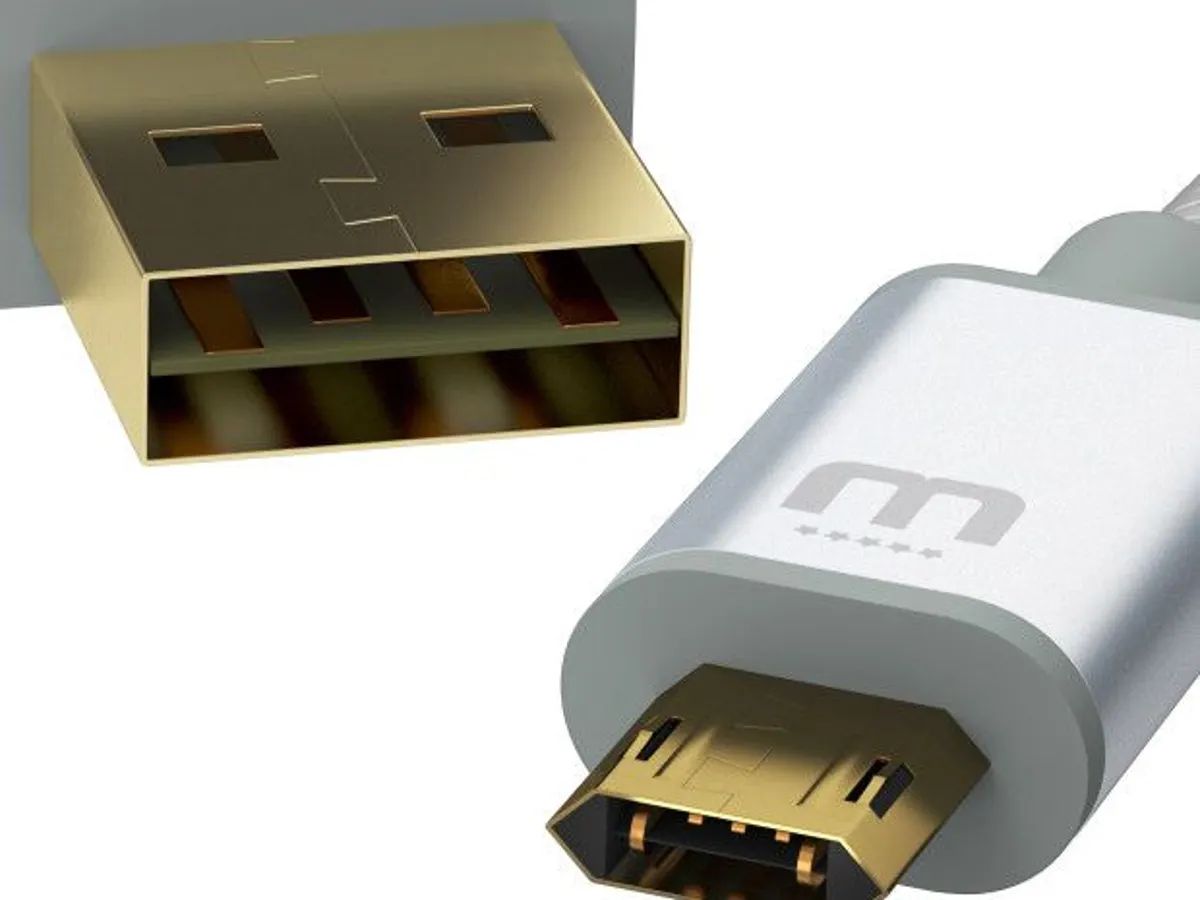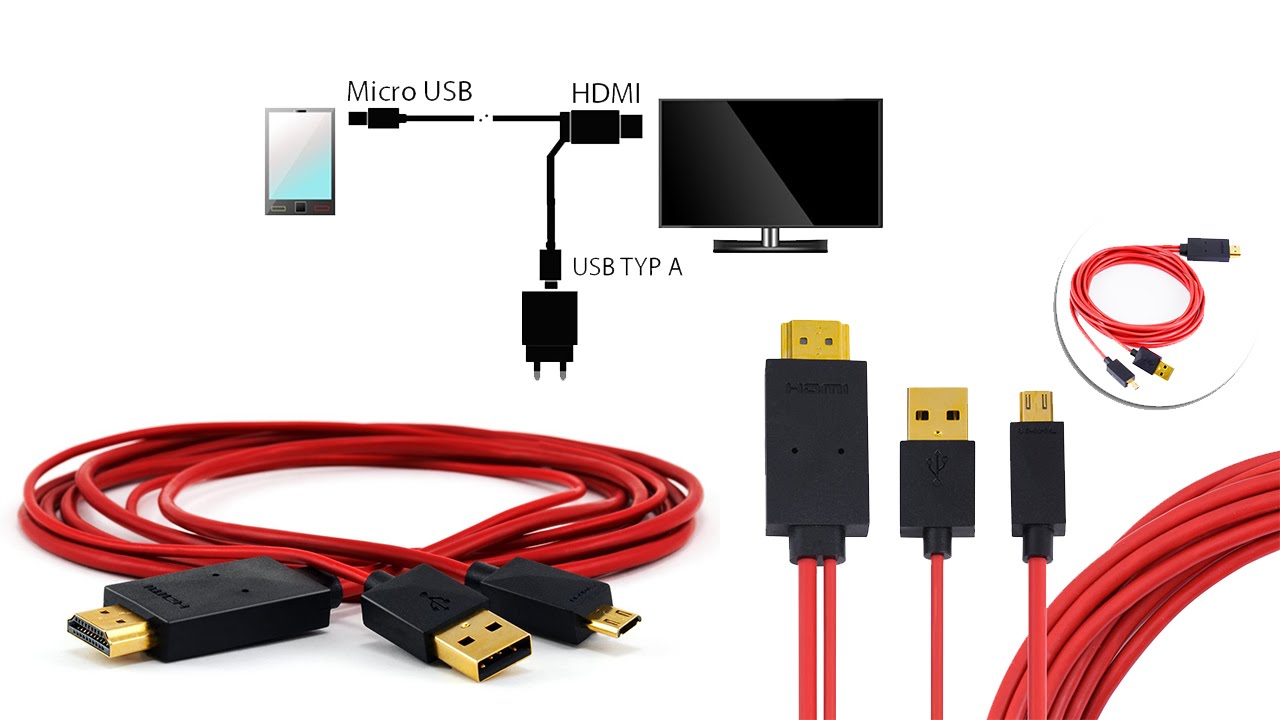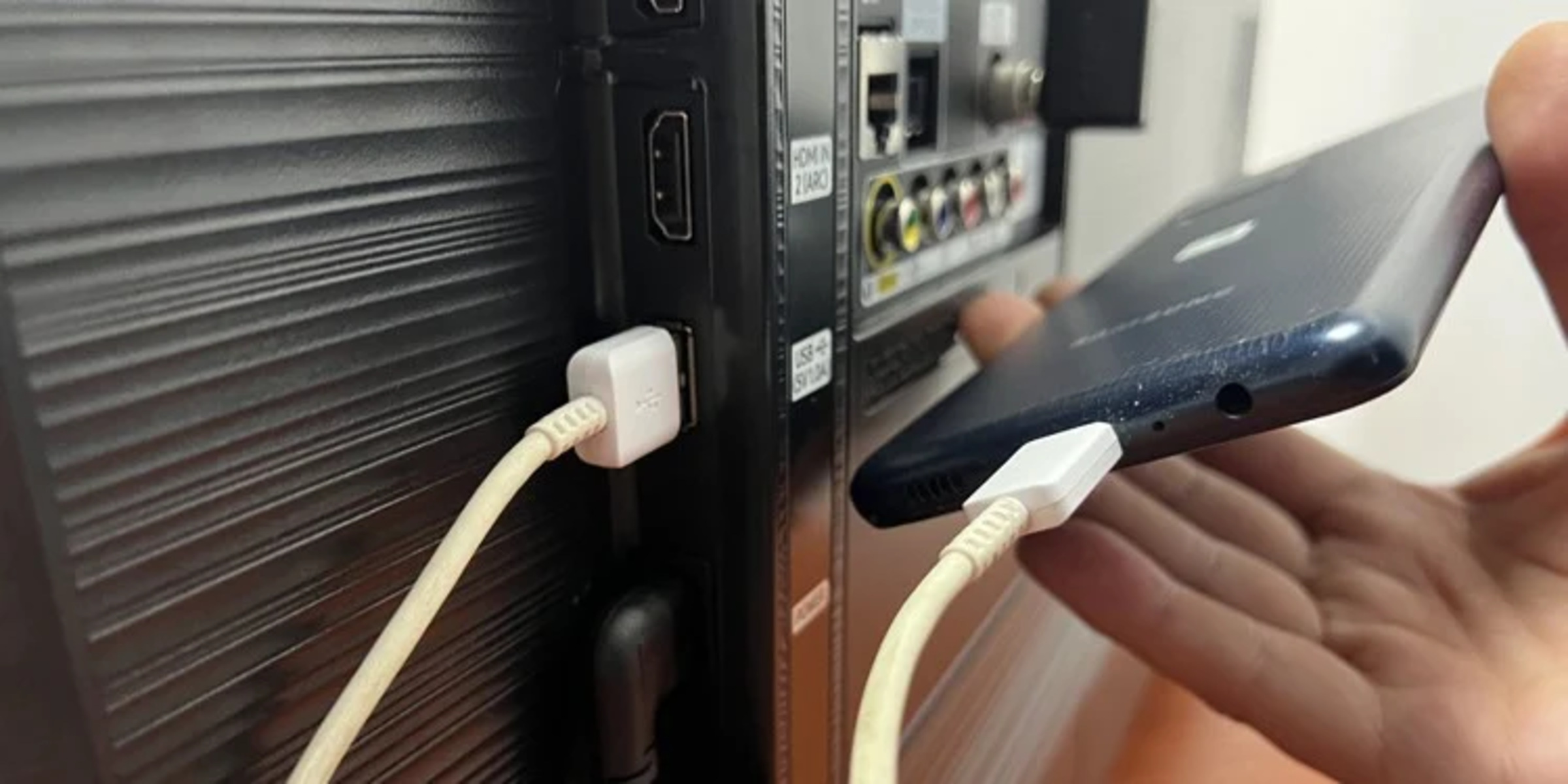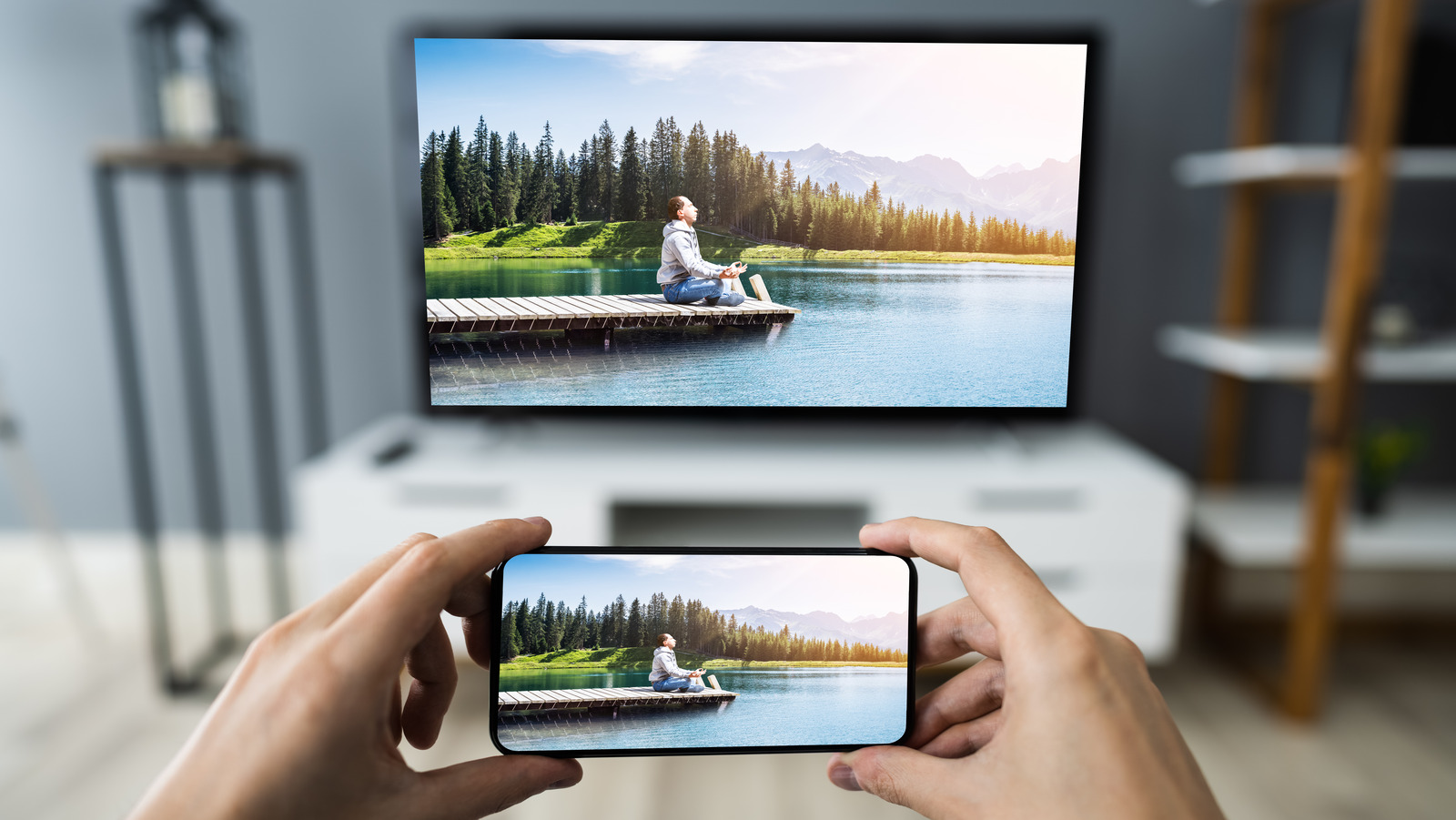Introduction
Welcome to the world of MHL HDMI! If you’re someone who loves to connect and experience high-quality audio and video on your devices, then you’ve come to the right place. MHL HDMI, which stands for Mobile High-Definition Link High-Definition Multimedia Interface, is a technology that allows seamless connectivity between mobile devices and displays.
With MHL HDMI, you can easily stream content from your smartphone or tablet to your television or monitor, enjoying all your favorite movies, games, and videos in stunning resolution, vibrant colors, and immersive sound. This technology has revolutionized the way we connect and interact with our devices, providing a convenient and user-friendly solution for sharing and experiencing multimedia content.
The MHL HDMI standard was first introduced in 2010, and since then, it has gained popularity among device manufacturers and consumers worldwide. Its ability to deliver high-quality audio and video signals over a single cable has made it a go-to option for connecting mobile devices to larger displays.
MHL HDMI offers numerous benefits and features that make it a standout choice for users seeking a seamless and immersive multimedia experience. It supports Full HD video resolution, enabling you to enjoy content in crystal-clear detail. Additionally, it offers multi-channel audio support, allowing for an enhanced audio experience that complements the visual elements.
One of the key advantages of MHL HDMI is its compatibility with a wide range of devices. From smartphones and tablets to digital cameras and gaming consoles, a variety of devices are equipped with MHL HDMI ports, making it easy to connect and share content across different platforms.
In the next sections, we will delve deeper into the history of MHL HDMI, its key features, compatibility, and how it works. We will also compare it to other HDMI versions and explore its common uses and advancements in technology. So, buckle up and get ready to dive into the exciting world of MHL HDMI!
Definition of MHL HDMI
MHL HDMI, which stands for Mobile High-Definition Link High-Definition Multimedia Interface, is a technology that provides a seamless connection between mobile devices and displays. It allows users to share and enjoy high-quality audio and video content from their smartphones, tablets, or other compatible devices on larger screens, such as televisions and monitors.
The MHL HDMI standard was introduced in 2010 by a consortium of leading consumer electronics companies, including Sony, Nokia, Samsung, Toshiba, and Silicon Image. It was created as a solution to address the increasing demand for a simple and efficient way to connect mobile devices to larger displays.
MHL HDMI utilizes a single cable connection to transmit both audio and video signals from the mobile device to the display. This eliminates the need for multiple cables and adapters, providing a clutter-free and hassle-free user experience.
One of the distinguishing features of MHL HDMI is its ability to deliver high-definition video and audio content. It supports Full HD (1080p) video resolution, ensuring a sharp and vibrant visual experience. Additionally, it supports multi-channel audio formats, such as Dolby Digital and DTS, providing a rich and immersive sound experience.
MHL HDMI cables and adapters come in various forms, including micro USB to HDMI, USB-C to HDMI, and HDMI to HDMI. These cables connect the mobile device’s charging port, such as micro USB or USB-C, to the HDMI port on the display. Some cables also include an additional USB connector for charging the mobile device while it is connected.
In terms of compatibility, MHL HDMI is supported by a wide range of devices, including smartphones, tablets, digital cameras, gaming consoles, and other consumer electronics. However, it is important to note that not all devices come with built-in MHL HDMI support. In some cases, users may need to purchase an MHL HDMI adapter or dongle to enable MHL HDMI connectivity.
In the next sections, we will explore the history of MHL HDMI, its key features and benefits, and how it works. We will also compare MHL HDMI to other HDMI versions, examine its common uses, and discuss advancements in MHL HDMI technology.
History of MHL HDMI
The MHL HDMI technology has a fascinating history that dates back to its inception in 2010. It was developed by a consortium of prominent consumer electronics companies, including Sony, Nokia, Samsung, Toshiba, and Silicon Image.
The goal of these companies was to create a standardized solution for connecting mobile devices to larger displays, such as televisions and monitors, without compromising on audio and video quality. Up until that point, users had to rely on various cables and adapters to establish connectivity, which often resulted in a cumbersome and complex setup.
The MHL HDMI standard was designed to simplify the process and provide a seamless user experience. The consortium released the first version of the MHL HDMI specification, known as MHL 1.0, which supported 1080p video resolution and multi-channel audio.
Over the years, the MHL HDMI standard underwent several updates and enhancements to keep up with the advancements in technology. MHL 2.0, introduced in 2011, brought improved bandwidth, allowing for higher video resolutions and support for 3D content.
In 2013, MHL 3.0 was released, introducing support for 4K Ultra HD video resolution as well as enhanced audio capabilities, including support for object-based audio formats like Dolby Atmos and DTS:X. This version also introduced the concept of a “Reverse Link,” enabling remote control functionality between the mobile device and the display.
Building on the success of previous versions, MHL 3.0 paved the way for the development of MHL 3.1 and MHL 3.2, which further refined the technology and introduced features like simultaneous dual display support and expanded power charging capabilities.
In 2016, MHL 1.0 and MHL 2.0 were merged into a unified specification called MHL Alt Mode, which leveraged the power of the USB-C connector to provide MHL HDMI connectivity. This allowed for a wider adoption of MHL HDMI, as many new devices started adopting the USB-C standard.
Today, MHL HDMI continues to evolve, with the most recent version being MHL 4.0, released in 2019. MHL 4.0 offers support for 8K video resolution, higher data transfer rates, and improved power delivery capabilities.
The history of MHL HDMI showcases the commitment of the consortium and the industry as a whole to provide users with a seamless and high-quality multimedia experience. It has transformed the way we connect and share content, bringing the world of mobile devices and large displays closer together.
In the next sections, we will explore the key features and benefits of MHL HDMI, its compatibility, and how it works. We will also compare MHL HDMI to other HDMI versions, investigate its common uses, and discuss the advancements in technology that have shaped its evolution.
Key Features and Benefits of MHL HDMI
MHL HDMI offers a wide range of features and benefits that make it a standout technology for connecting mobile devices to larger displays. Let’s explore some of its key features and the advantages it brings:
- Seamless Connectivity: MHL HDMI provides a seamless and hassle-free way to connect your mobile devices, such as smartphones and tablets, to larger displays like televisions and monitors. It eliminates the need for multiple cables and adapters, simplifying the setup process.
- High-Quality Audio and Video: With MHL HDMI, you can enjoy high-definition audio and video content on your larger display. It supports Full HD (1080p) video resolution, ensuring a sharp and vibrant visual experience. The technology also supports multi-channel audio formats, delivering immersive sound to complement the visuals.
- Single Cable Connection: MHL HDMI utilizes a single cable connection to transmit both audio and video signals from your mobile device to the display. This reduces clutter and simplifies the cable management, providing a clean and organized setup.
- Compatibility: MHL HDMI is compatible with a wide range of devices, including smartphones, tablets, digital cameras, gaming consoles, and other consumer electronics. It offers versatility in connecting different devices and sharing content across various platforms.
- Power Charging: Many MHL HDMI cables and adapters feature an additional USB connector, allowing you to charge your mobile device while it is connected to the larger display. This ensures that your device stays powered up during extended viewing sessions.
- Multi-Tasking and Productivity: MHL HDMI enables you to use your mobile device as a controller or second screen while it is connected to the larger display. This opens up possibilities for multi-tasking and productivity, whether it’s presenting slideshows, gaming, or working on documents.
- Enhanced Gaming Experience: Gamers can take advantage of MHL HDMI’s low-latency connectivity to play their favorite games on larger displays. With high-quality graphics and immersive sound, MHL HDMI enhances the gaming experience, bringing it to a whole new level.
The features and benefits of MHL HDMI make it an attractive choice for users seeking a seamless and immersive multimedia experience. Whether you’re enjoying movies, playing games, or sharing photos and videos with friends and family, MHL HDMI delivers high-quality audio and video content, simplifies connectivity, and enhances your overall viewing experience.
In the next sections, we will explore the compatibility of MHL HDMI, how it works, and how it compares to other HDMI versions. We will also discuss the common uses of MHL HDMI and the advancements in technology that have shaped its evolution.
MHL HDMI Compatibility
MHL HDMI is compatible with a wide range of devices, making it a versatile solution for connecting mobile devices to larger displays. Let’s dive into the details of its compatibility:
Smartphones and Tablets: Many smartphones and tablets come equipped with MHL HDMI ports, allowing for direct connectivity with displays that have HDMI ports. However, it is important to note that not all mobile devices have built-in MHL HDMI support. In such cases, users may need to purchase an MHL HDMI adapter or dongle to enable MHL HDMI connectivity.
Digital Cameras: Some digital cameras also feature MHL HDMI ports, giving photographers the ability to view their captured images and videos on larger screens, with the option to enjoy high-definition playback.
Gaming Consoles: Gaming enthusiasts can benefit from MHL HDMI compatibility as well. Certain gaming consoles, such as PlayStation and Xbox, offer MHL HDMI support, allowing gamers to play their favorite games on larger displays and experience improved graphics and sound.
Streaming Devices: Streaming devices like Roku, Chromecast, and Fire TV Stick often incorporate MHL HDMI support, enabling users to stream online content from platforms such as Netflix, YouTube, and Hulu directly to their larger displays.
PCs and Laptops: Some PCs and laptops offer MHL HDMI connectivity, making it possible to connect these devices to compatible displays without the need for additional cables or adapters.
In addition to these devices, MHL HDMI compatibility extends to other consumer electronics such as Blu-ray players, set-top boxes, and home theater receivers. This ensures that users can easily connect and enjoy their multimedia content on a larger screen with enhanced audio and video quality.
It is worth noting that the compatibility of MHL HDMI depends on the specific device and its MHL HDMI version. Earlier versions of MHL HDMI, such as MHL 1.0 and MHL 2.0, may have limited compatibility compared to the more recent versions. Therefore, it is essential to check the device specifications and ensure compatibility before attempting to connect.
To establish a connection between your mobile device and the larger display, you will need an MHL HDMI cable or adapter. These cables typically have one end that connects to the mobile device’s charging port, such as micro USB or USB-C, and the other end that plugs into the HDMI port on the display.
With its broad compatibility, MHL HDMI offers users the flexibility to connect various devices and share multimedia content on larger screens with ease. In the next sections, we will explore how MHL HDMI works, its comparison to other HDMI versions, and its common usage scenarios.
How Does MHL HDMI Work?
MHL HDMI allows for seamless connectivity between mobile devices and larger displays by utilizing a straightforward and efficient technology. Let’s take a closer look at how MHL HDMI works:
MHL HDMI operates on a “plug and play” principle, meaning that once the MHL HDMI cable is connected between the mobile device and the display, the connection is established automatically. No additional software or settings are required.
The MHL HDMI cable consists of two connectors: one end that connects to the mobile device’s charging port, such as micro USB or USB-C, and the other end that plugs into the HDMI port on the display. Some MHL HDMI cables also include an additional USB connector for charging the mobile device while it is connected.
When the MHL HDMI cable is plugged into both the mobile device and the display, a direct connection is established, allowing for the transmission of audio and video signals. This means that you can stream content from your mobile device, such as movies, photos, and apps, directly to the larger display.
MHL HDMI uses the Mobile High-Definition Link (MHL) technology to transmit audio and video signals over the cable. The MHL technology converts the mobile device’s data into a format that is compatible with HDMI, ensuring high-quality audio and video playback on the larger display.
One important aspect of MHL HDMI is its ability to charge the mobile device while it is connected. When the MHL HDMI cable includes an additional USB connector, it can draw power from the display or an external power source and supply it to the mobile device, keeping it charged during extended viewing sessions.
It is worth noting that MHL HDMI compatibility depends on the specific device and its MHL HDMI version. Some mobile devices may require an additional MHL HDMI adapter or dongle to enable MHL HDMI connectivity.
Furthermore, MHL HDMI is designed to support various resolutions, ranging from standard definition to Full HD and even 4K Ultra HD, depending on the capabilities of the device and the display. This ensures that users can enjoy their content in the highest possible quality.
Overall, the working principle of MHL HDMI is simple yet effective. By utilizing a single cable connection and the MHL technology, it enables users to effortlessly connect their mobile devices to larger displays, stream high-quality audio and video content, and charge their devices simultaneously.
In the next sections, we will compare MHL HDMI to other HDMI versions, explore its common uses, and discuss the advancements in MHL HDMI technology that have shaped its evolution.
MHL HDMI vs. Other HDMI Versions
MHL HDMI and other HDMI versions are both technologies designed to transmit audio and video signals between devices and displays. Let’s compare MHL HDMI to other HDMI versions to understand the similarities and differences:
HDMI (High-Definition Multimedia Interface): HDMI is a widely used and standardized technology that supports high-definition audio and video transmission. It is commonly found on televisions, monitors, projectors, and other display devices. HDMI uses a cable with a standard HDMI connector to transmit audio and video signals, typically from a source device, such as a Blu-ray player or gaming console, to a display device.
MHL HDMI (Mobile High-Definition Link High-Definition Multimedia Interface): MHL HDMI, as its name suggests, is specifically designed for connecting mobile devices, such as smartphones and tablets, to larger displays. MHL HDMI utilizes a single cable that connects the mobile device’s charging port, such as micro USB or USB-C, to the HDMI port on the display. This eliminates the need for multiple cables and adapters and provides a seamless user experience.
While both HDMI and MHL HDMI serve the purpose of transmitting audio and video signals, there are a few key differences between them:
Compatibility: HDMI is more universal and widely supported across various devices and display devices. It is commonly found on televisions, monitors, and other audiovisual equipment. On the other hand, MHL HDMI is specifically designed for mobile devices, and its compatibility depends on the presence of an MHL HDMI port or the use of an adapter or dongle.
Cable Connection: HDMI uses a standard HDMI cable with HDMI connectors on both ends, while MHL HDMI utilizes a single cable that connects to the charging port of the mobile device and the HDMI port on the display. This single cable connection simplifies the setup and reduces cable clutter.
Power Charging: One distinct advantage of MHL HDMI is its ability to charge the mobile device while it is connected to the larger display. HDMI does not provide power charging functionality, as it focuses solely on audio and video transmission.
Supported Resolutions: Both HDMI and MHL HDMI support various resolutions, including standard definition, high definition (HD), and 4K Ultra HD. The supported resolutions may differ based on the capabilities of the devices and displays being used.
It is important to note that MHL HDMI is not intended to replace HDMI. Instead, it provides a specialized solution for connecting mobile devices to larger displays, offering convenience, simplicity, and additional charging capabilities. HDMI remains the standard choice for audio and video transmission in a wide range of devices and scenarios.
In the next sections, we will explore the common uses of MHL HDMI, including its applications in gaming, multimedia streaming, and productivity. We will also delve into the advancements in MHL HDMI technology and its future prospects.
Common Uses of MHL HDMI
MHL HDMI offers a variety of applications and use cases, making it a versatile technology for connecting mobile devices to larger displays. Let’s explore some of the common uses of MHL HDMI:
Gaming: MHL HDMI enhances the gaming experience by allowing gamers to play their favorite mobile games on larger displays. By connecting their smartphones or tablets to a television or monitor via MHL HDMI, gamers can enjoy improved graphics, immersive sound, and a more engaging gameplay experience.
Multimedia Streaming: MHL HDMI enables users to stream multimedia content from their mobile devices directly to a larger display. Whether it’s watching movies, TV shows, or online videos, MHL HDMI provides a convenient and high-quality solution for enjoying multimedia content on a bigger screen.
Presentations and Meetings: MHL HDMI can be handy in professional settings, allowing users to connect their mobile devices to projectors or larger screens during presentations, meetings, or conferences. This enables seamless sharing of slideshows, documents, and other multimedia content, making it easier to collaborate and communicate ideas effectively.
Photo and Video Viewing: With MHL HDMI, users can view their photos and videos on a larger display with stunning clarity and detail. Whether it’s reliving memorable moments with family and friends or showcasing professional work, MHL HDMI provides a platform to enjoy visual content with enhanced visual impact.
Home Entertainment: MHL HDMI can turn a mobile device into a portable media center. By connecting a smartphone or tablet to a television or home theater system, users can access their favorite streaming services, play videos, stream music, and enjoy a full cinematic experience in the comfort of their own home.
Productivity and Second Screen: MHL HDMI allows users to utilize their mobile devices as a second screen while connected to a larger display. This can be beneficial for multitasking, as users can access emails, calendars, documents, and other apps on their mobile device while viewing relevant content on the larger screen.
Education and Training: In educational settings or professional training sessions, MHL HDMI can facilitate visual learning and interactive experiences. Students and trainees can connect their mobile devices to larger displays, providing a platform for immersive lessons, interactive presentations, and collaborative learning.
These are just a few examples of the common uses of MHL HDMI. The versatility and convenience of MHL HDMI make it a popular choice for a wide range of scenarios, whether it’s for entertainment, productivity, or educational purposes.
In the next sections, we will discuss the advancements in MHL HDMI technology, including its support for higher resolutions, expanded features, and the future prospects of this evolving connectivity standard.
Advancements in MHL HDMI Technology
MHL HDMI technology has evolved and advanced over the years, keeping up with the ever-changing demands of users and technological advancements. Let’s explore some of the notable advancements in MHL HDMI technology:
Higher Resolutions: MHL HDMI has continually pushed the boundaries of video resolution. With each new version, MHL HDMI has introduced support for higher resolutions, allowing users to enjoy content in stunning detail. From Full HD (1080p) to 4K Ultra HD and even 8K resolution, MHL HDMI ensures that users can experience their media in the highest possible quality.
Enhanced Audio Capabilities: Alongside higher resolutions, MHL HDMI has also expanded its audio capabilities. It now supports various audio formats, including multi-channel audio, object-based audio, and advanced audio codecs. This ensures that users can enjoy immersive sound to complement the visual experience.
Expanded Features: MHL HDMI has introduced new features to enhance the user experience. These include simultaneous dual display support, allowing users to connect multiple displays to a single mobile device for an extended viewing experience. Enhanced power charging capabilities have also been introduced, enabling faster and more efficient charging while connected to the larger display.
Integration with USB-C: With the emergence of USB-C, MHL HDMI technology has adapted and integrated with this new standard. MHL HDMI now utilizes the power and capabilities of USB-C ports to provide connectivity and functionality. This integration ensures compatibility with the latest mobile devices that feature USB-C ports and allows for a more streamlined and efficient connection process.
Improved Latency: MHL HDMI has made strides in reducing latency, which refers to the delay between input and response. Lower latency ensures a more responsive and immersive gaming experience, making MHL HDMI a preferred choice for mobile gaming enthusiasts.
Backward Compatibility: MHL HDMI has maintained backward compatibility with previous versions, ensuring that users can still connect and use their devices with older MHL HDMI specifications. This backward compatibility allows users to continue enjoying the benefits of MHL HDMI while using a mixture of old and new devices.
These advancements in MHL HDMI technology have significantly improved the user experience, pushing the boundaries of audio and video quality, enhancing power charging capabilities, and ensuring compatibility with the latest hardware standards.
As technology continues to advance, the future of MHL HDMI looks promising. With the increasing popularity of higher resolutions, greater audio immersion, and the emergence of new display technologies, MHL HDMI is expected to evolve further to meet the demands of users for even more immersive and seamless connectivity experiences.
In the next sections, we will explore the implications of MHL HDMI in various industries and use cases, including gaming, multimedia streaming, and how it contributes to productivity. We will also discuss the potential future developments and prospects of MHL HDMI.
Conclusion
MHL HDMI has revolutionized the way we connect and interact with our mobile devices and larger displays. Through its seamless connectivity, high-quality audio and video transmission, and versatility in device compatibility, MHL HDMI has become an essential technology in the multimedia world.
Whether you’re a gamer looking for an immersive gaming experience, a movie enthusiast wanting to enjoy films on a larger screen, or a professional seeking a convenient way to present and collaborate, MHL HDMI provides a user-friendly and efficient solution.
The advancements in MHL HDMI technology, including support for higher resolutions, enhanced audio capabilities, expanded features, and integration with USB-C, have further elevated the user experience and widened the possibilities of connecting mobile devices to larger displays.
As MHL HDMI continues to evolve, we can expect to see even more improvements and innovations in the future. The increased demand for higher resolutions, advancements in audio technologies, and the emergence of new display technologies will likely shape the next generation of MHL HDMI.
Whether it’s for gaming, multimedia streaming, productivity, or any other application, MHL HDMI offers a user-friendly, convenient, and visually stunning experience. Its compatibility with a wide range of devices ensures that users can easily connect and enjoy their favorite content on larger screens.
So, embrace the world of MHL HDMI and unlock a whole new level of audiovisual pleasure. Connect your mobile devices to larger displays and immerse yourself in the captivating world of high-definition multimedia.
From gaming to multimedia streaming, presentations, and beyond, MHL HDMI continues to reshape the way we consume and share content on our devices. Explore the possibilities, embrace the technology, and embark on a journey of seamless connectivity and immersive audiovisual experiences with MHL HDMI.







